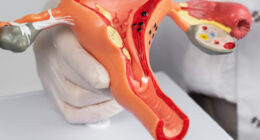Borderline Personality Disorder (BPD) is a mental health condition that affects how individuals think, feel, and relate to others. It is characterized by intense emotions, unstable relationships, and difficulty managing self-image. People with BPD often experience mood swings, impulsive behaviours, and fears of abandonment, which can make their daily lives challenging. Understanding BPD, its symptoms, and treatment options can help individuals manage the condition and improve their quality of life.
Symptoms of Borderline Personality Disorder
BPD is marked by a wide range of emotional, behavioural, and cognitive symptoms that can vary from person to person. The most common signs of BPD include:
1. Emotional Instability
One of the defining features of BPD is intense emotional reactions that may seem disproportionate to the situation. Individuals with BPD often experience rapid mood swings, shifting from feelings of happiness to sadness, anger, or anxiety within a short period. These emotions can be overwhelming and difficult to control.
2. Fear of Abandonment
A significant symptom of BPD is an intense fear of being abandoned or rejected by others. People with BPD may go to great lengths to avoid real or imagined abandonment, leading to clingy or dependent behaviours in relationships. This fear can make relationships tumultuous, as individuals with BPD may react with panic or anger if they perceive that someone is pulling away.
3. Unstable Relationships
Relationships for people with BPD are often characterized by extreme highs and lows. They may idealize someone one moment, seeing them as perfect, only to quickly switch to devaluing them if they feel hurt or disappointed. This “black-and-white” thinking can strain personal and professional relationships, as those with BPD struggle to find balance.

4. Impulsive Behavior
Impulsivity is another common symptom of BPD. Individuals may engage in risky or self-destructive behaviours, such as reckless driving, substance abuse, binge eating, or spending sprees. These impulsive actions are often attempts to cope with emotional pain or feelings of emptiness but can lead to further harm.
5. Identity Disturbance
People with BPD may have a distorted sense of self, often feeling unsure of who they are or what they want in life. This unstable self-image can lead to frequent changes in goals, values, and aspirations. As a result, individuals with BPD may feel disconnected from themselves and struggle with feelings of inadequacy or worthlessness.
6. Chronic Feelings of Emptiness
Many individuals with BPD report feeling empty or hollow inside. This sense of emptiness can be constant, and individuals may try to fill the void with unhealthy coping mechanisms, such as substance use or seeking validation from others.
7. Intense Anger and Difficulty Controlling It
People with BPD may experience intense anger, often referred to as “borderline rage.” This anger can be difficult to control and may be directed at themselves or others. Explosive outbursts, verbal or physical aggression, and resentment are common, although some may suppress their anger, leading to internal emotional distress.
8. Self-harm or Suicidal Behavior
A hallmark of BPD is self-harming behaviours or suicidal thoughts and actions. These behaviours are often a way to cope with overwhelming emotions or feelings of rejection. Individuals with BPD may cut themselves, burn themselves, or engage in other harmful activities as a form of release or punishment.
Causes of Borderline Personality Disorder
The exact cause of BPD is not fully understood, but research suggests that a combination of genetic, environmental, and social factors may contribute to its development.
1. Genetics
Studies show that BPD may run in families, suggesting a genetic component. People with a family history of personality disorders or mental health issues may have a higher risk of developing BPD.
2. Childhood Trauma
Experiencing trauma during childhood, such as abuse, neglect, or witnessing domestic violence, is a significant risk factor for developing BPD. Many people with BPD report having experienced early life trauma, which may impact their ability to form healthy relationships and regulate emotions as adults.
3. Brain Function
Research indicates that individuals with BPD may have differences in brain structure and function, particularly in areas that control emotional regulation and impulsivity. These differences may contribute to the emotional intensity and behavioural issues seen in people with BPD.
Diagnosis and Treatment of Borderline Personality Disorder
BPD is typically diagnosed by a mental health professional, such as a psychiatrist or psychologist, through a detailed assessment of symptoms and history. Treatment for BPD focuses on managing symptoms and improving emotional regulation.
1. Psychotherapy
Psychotherapy, also known as talk therapy, is the most effective treatment for BPD. Dialectical Behavior Therapy (DBT) is a common approach that teaches individuals how to manage emotions, improve relationships, and reduce self-destructive behaviours. Cognitive Behavioral Therapy (CBT) is another option that helps change negative thought patterns and behaviours.
2. Medication
While there is no specific medication for BPD, certain medications may be prescribed to manage symptoms such as depression, anxiety, or mood swings. Antidepressants, mood stabilizers, and antipsychotic medications may help alleviate some of the symptoms associated with BPD.
3. Support Systems
Building a strong support system is crucial for people with BPD. Family, friends, and support groups can provide emotional encouragement and understanding, helping individuals cope with the challenges of the disorder. It’s also essential for loved ones to educate themselves about BPD to provide the best possible support.
Conclusion
Borderline Personality Disorder is a complex mental health condition that affects many aspects of a person’s life. While it can be challenging to manage, treatment options like psychotherapy, medication, and a strong support system can significantly improve symptoms and quality of life. Recognizing the symptoms of BPD and seeking help early is essential for better long-term outcomes. With the right care, individuals with BPD can lead fulfilling and meaningful lives.









